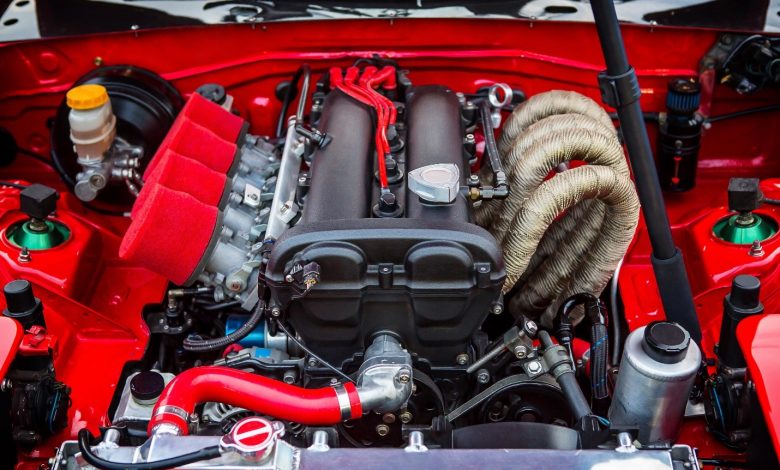Ken Arellano on How Formula 1 Technology Is Influencing the Cars We Drive Every Day

Ken Arellano begins by exploring the fascinating connection between the high-stakes world of Formula 1 racing and the cars we use on our everyday commutes. The technological advances made in the world of motorsport have a profound impact on the automotive industry, leading to innovations that ultimately make our daily drives safer, more efficient, and more thrilling. From advanced aerodynamics to state-of-the-art braking systems, Formula 1 is often the testing ground for features that eventually find their way into the vehicles that millions of people drive every day.
Aerodynamics: Shaping the Future of Efficiency
One of the most significant areas where Formula 1 technology is influencing modern cars is in the realm of aerodynamics. Ken Arellano notes that the need for speed in F1 has driven engineers to develop cutting-edge aerodynamic designs that reduce drag while maximizing downforce. These concepts are gradually adapted for consumer vehicles, where reducing drag means better fuel efficiency. Elements like rear spoilers, diffusers, and even underbody panels used in modern cars can trace their roots back to advancements made in F1. The quest for perfect aerodynamics not only enhances performance but also contributes to the reduction of fuel consumption and emissions, something Ken Arellano highlights as essential in today’s eco-conscious automotive landscape.
Braking Systems: Safety Derived from High-Speed Racing
Ken Arellano also delves into how advanced braking technology from Formula 1 has found its way into everyday vehicles. F1 cars are equipped with highly sophisticated braking systems that allow drivers to decelerate from incredible speeds within mere seconds. While consumer cars don’t face such extreme situations, innovations such as carbon-ceramic brakes and anti-lock braking systems (ABS) were first developed and refined on F1 tracks. Today, these technologies enhance the safety of passenger vehicles, providing superior stopping power and stability in emergency situations. By drawing inspiration from the demanding conditions of Formula 1, manufacturers can equip our cars with brakes that respond quicker and function more reliably.
A Smooth Ride Inspired by the Track
Suspension systems in Formula 1 are designed to provide the perfect balance between control and comfort, and these advancements have heavily influenced the suspension setups of consumer cars. Ken Arellano points out that the adaptive suspension systems found in many modern luxury cars owe much to the work of F1 engineers. By dynamically adjusting the dampers in real-time, these systems allow for a smoother ride without sacrificing handling capabilities. As Ken Arellano emphasizes, it’s not just about comfort but also about ensuring that cars maintain optimal contact with the road, improving safety and performance during everyday driving conditions. The combination of F1-inspired suspension technology with electronic stability programs ensures that even the sharpest turns and roughest roads are navigated with precision and ease.
Hybrid Power Units: Efficiency Meets Performance
Another key influence of Formula 1 on consumer vehicles is the development of hybrid power units. Ken Arellano discusses how F1’s pivot to hybrid engines has pushed automakers to rethink how they combine traditional internal combustion engines with electric motors. In Formula 1, the objective is to maximize performance while adhering to fuel restrictions, and this has led to the creation of some of the most efficient power units in the world. This technology has trickled down to the hybrid and plug-in hybrid cars that we see on the roads today. By leveraging the energy recovery systems pioneered in F1, manufacturers are able to build vehicles that offer impressive performance without compromising on fuel efficiency. Ken Arellano suggests that the lessons learned from high-performance racing are helping to shape a greener future for the automotive industry.
Data and Telemetry: Connected Cars for a Connected World
Formula 1 is known for its use of data and telemetry to monitor every aspect of a car’s performance in real time. Ken Arellano notes that the same concept is now used in modern vehicles through onboard diagnostics and connected car technologies. Consumer cars are increasingly equipped with sensors that feed data back to the driver or even directly to the manufacturer. This has led to a new era of predictive maintenance, where issues can be identified before they become serious problems. Ken Arellano also highlights how connected technologies inspired by F1 are enhancing driver experience, offering insights into driving habits, and helping car owners maintain their vehicles more efficiently.
Lightweight Materials for a Stronger, Faster, and Safer Ride with Ken Arellano
The pursuit of speed in Formula 1 has led to significant advancements in the use of lightweight materials, such as carbon fiber and aluminum alloys. Ken Arellano points out that while these materials were once exclusive to the racing world, they are now increasingly used in consumer vehicles. The use of lightweight yet strong materials reduces the overall weight of a vehicle, which in turn improves fuel efficiency and performance. Additionally, lighter materials can help absorb and dissipate energy more effectively during a collision, thus enhancing safety. Ken Arellano argues that the use of F1-inspired materials is transforming how cars are built, leading to a new generation of vehicles that are safer, more efficient, and more exciting to drive.
Driver Assistance and Safety Features with Ken Arellano
Another critical area influenced by Formula 1 is the development of driver assistance and safety technologies. Ken Arellano explains that F1 drivers rely on a host of support systems, such as traction control and advanced sensors, to keep their cars under control at high speeds. These same technologies have evolved into the driver assistance features we now see in consumer vehicles, including lane-keeping assist, automatic emergency braking, and adaptive cruise control. The goal, Ken Arellano points out, is to create safer driving environments by providing additional layers of assistance to the driver. This evolution from high-speed racing to everyday use demonstrates how Formula 1 is at the forefront of safety innovation.
Formula 1’s Lasting Impact on Everyday Cars
Ken Arellano concludes by emphasizing the profound impact that Formula 1 technology has on the cars we drive every day. From aerodynamics to hybrid engines, and from advanced braking systems to lightweight materials, the influence of F1 on consumer vehicles is undeniable. These innovations, born out of the need for speed and precision, have made modern cars safer, more efficient, and more enjoyable to drive. As the automotive industry continues to evolve, the lessons learned from the world of Formula 1 will no doubt continue to shape the future of transportation, pushing the boundaries of what is possible.



